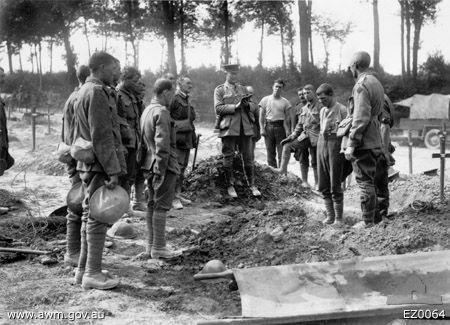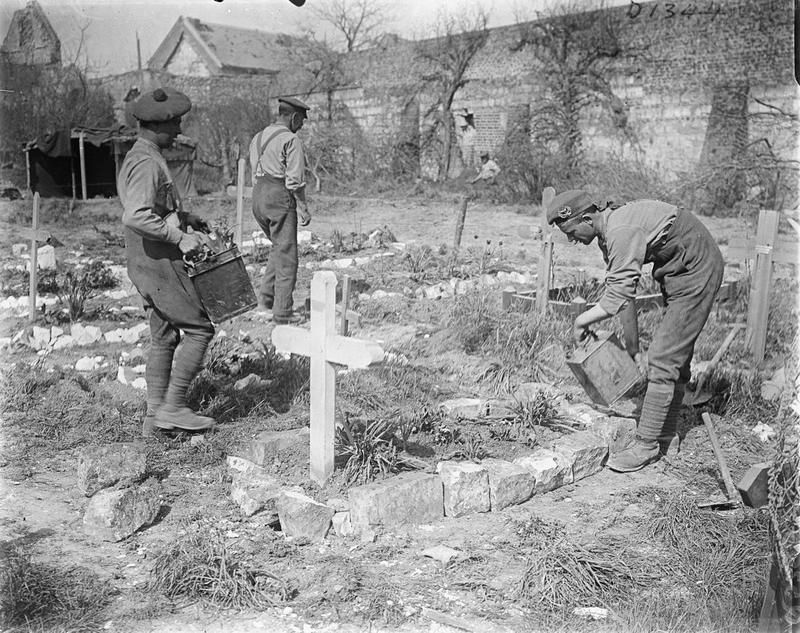Death, Identification and Burial
The Great War left a 'million dead' from Great Britain and its Empire.
The Prince of Wales wrote in The Times
in 1928:
'It is not easy to grasp the meaning of the words "A Million Dead". No one has ever seen - or ever could see - an assemblage of that number of living; and when one tries to visualise them, remembering what splendid fellows they were - what hopes and affections had clung to each one in his life - what heart-break his loss meant to his family and friends - then one begins to get some conception of the sacrifice which the Empire made in a cause which was thrust upon it'.
Burial on the battlefield might be hasty, a corpse built into a trench wall or thrown over the parados. Alternatively a burial might take place behind the lines, officiated by a padre, with the grave tended. Some 44,000 graves were lost to shellfire during the war, and many bodies were left unburied. The task facing the exhumation squads was massive - to concentrate and estimated 160,000 graves, and to find what was then half a million missing men.
The post-war exhumations
Between 1918 and 1921 Army exhumation squads moved across the battlefields and recovered 204,604 of the then missing half million soldiers . The task was passed to the Imperial (now Commonwealth) War Graves Commission, who by 1939 had recovered nearly 40,000 more.
Peter describes the progress and problems of the exhumations in his article 'Clearing the Dead' published in the Birmingham University Journal of the Centre for First World War Studies (2014).
(Photo IWM Q100915).
Problems in the exhumation squads
The process of exhumation did not proceed without problems. Significant irregularities were revealed in an inquiry into the burials at Hooge Crater Cemetery in 1919.
The Australian Graves Service, who worked alongside the exhumation squads, descended into an anarchy of misconduct, central to which was Charles Kingston, AKA 'Charlie the Bastard' (see right). This led to two courts of inquiry.
The problems of the service would involve the lost burial pits at Pheasant Wood, Fromelles.
Peter documents the travails of the AGS in an online article.
Identifying the Dead
One of the tasks for the exhumation squads was to try to identify the dead by ID discs, kit, personal possessions etc.
In an article in Stand To!, the journal of the Western Front Association, Peter examines how this was done at Tyne Cot, the largest CWGC cemetery in the world.

